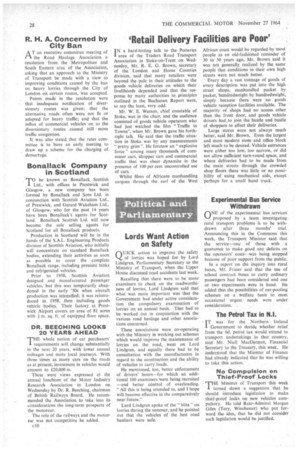'Retail Delivery Facilities are Poor'
Page 30

If you've noticed an error in this article please click here to report it so we can fix it.
IN a hard-hitting talk to the Potteries i area of the Traders Road Transport Association in Stoke-on-Trent on Wednesday, Mr. R. E. G. Brown, secretary of the London and Home Counties division, said that many retailers were beyond the palein their attitudes to the goods vehicle deliveries on which their livelihoods depended and that the response by many authorities to principles outlined in the Buchanan Report were, to say the least, very odd.
Mr. W. E. Watson, chief constable of Stoke, was in the chair, and the audience consisted of goods vehicle operators who had just watched the film "Traffic in Towns", when Mr. Brown gave his forthright talk. He said that the traffic situation in Stoke was by any measurements "pretty grim ". He foresaw an "explosive force" among many thousands of commuter cars, shopper cars and commercial traffic that was sheer dynamite in the presence of 100 per cent uncontrolled use of cars.
Whilst films of Africans manhandling cargoes through the surf of the West African coast would be regarded by most people as an old-fashioned reminder of .30 to 50 years ago, Mr. Brown said it was not generally realized by the same people that conditions in their own high streets were not much better.
Every day a vast tonnage of goods of every description was put into the high street shops, manhandled packet by packet, hundredweight by hundredweight, simply because there were no goods vehicle reception facilities available. The majority of shops had no access other than the front door, and goods vehicle drivers had ,to join the hustle and bustle of shoppers to effect their deliveries.
Large stores were not always much better, said Mr. Brown. Even the largest and most modern store and office block left much to be desired. Vehicle entrances were either too low, too narrow, or did not allow sufficient turn-round space, and where deliveries had to be made from the main streets through the crowded shop floors there was little or no possibility of using mechanical aids, except perhaps for a small hand truck.
















































































































